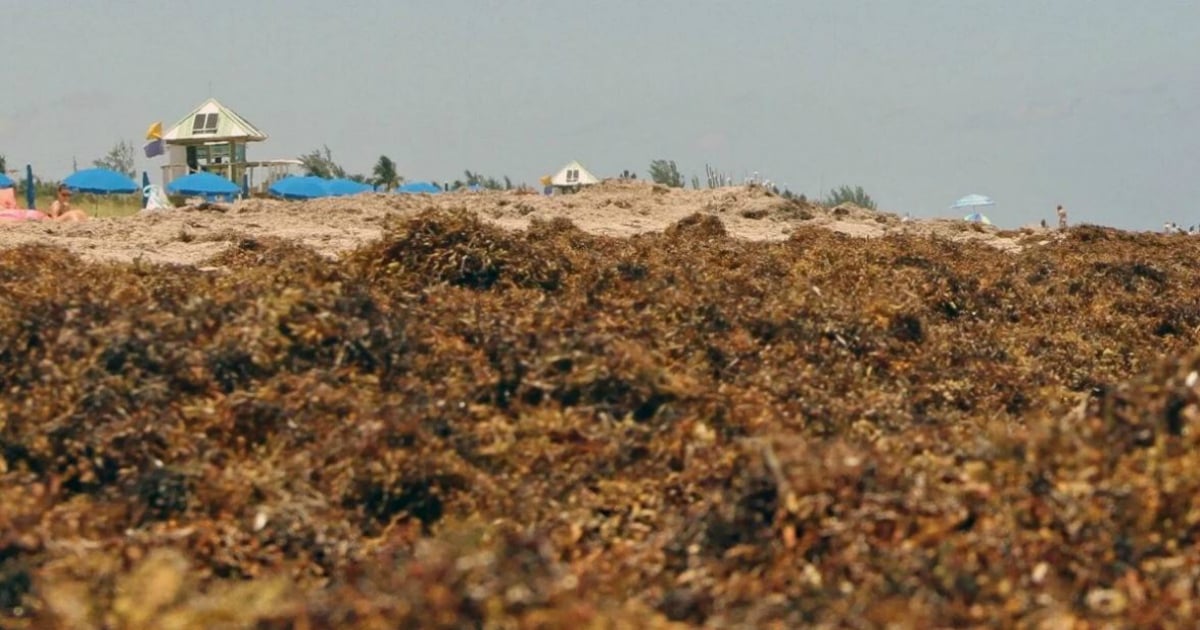Florida is on the brink of experiencing its most severe seaweed influx in history, with projections indicating a 40% increase in sargassum compared to the previous record-setting season of 2022. The bloom began earlier than usual in March and reached unprecedented levels by the end of April, according to a report released on April 30 by scientists from the University of South Florida's (USF) Optical Oceanography Lab, as reported by El Nuevo Herald.
Chuanmin Hu, a professor at the USF Optical Oceanography Lab, suggested that "this spring, water temperatures in the western Atlantic and the Caribbean Sea are expected to be higher than usual, creating favorable conditions for plant growth." The combination of wind, nutrient availability, and rising temperatures due to climate change are identified as the main drivers of this phenomenon.
On Wednesday at South Point Pier, beachgoers had to wade through thick patches of seaweed, lifting their knees high to navigate the algae-covered waters. Visitors have expressed dissatisfaction with the foul odor plaguing the beach this week.
In 2020, Miami-Dade County spent $2.8 million on algae cleanup efforts, a figure that rose to $3.9 million during the record-breaking 2022 season, according to the report. However, concerns have been raised about the disposal of the seaweed at landfills, as it decomposes into methane, a potent greenhouse gas that contributes to atmospheric warming.
To address the waste management challenge, the Miami-Dade Innovation Authority has awarded grants totaling $100,000 to four startups aimed at developing solutions for sargassum disposal, as noted by the Herald.
The sargassum issue in Florida dates back to 2019, when Miami-Dade County authorities began implementing measures to remove the seaweed from South Florida's beaches.
Understanding the Sargassum Challenge in Florida
What factors are contributing to the increase in seaweed in Florida?
The increase in seaweed is driven by higher water temperatures, wind patterns, nutrient availability, and climate change, which create optimal conditions for sargassum growth.
How is Miami-Dade County addressing the sargassum disposal issue?
Miami-Dade County is tackling the disposal problem by providing grants to startups focused on finding innovative solutions for managing seaweed waste efficiently.
What are the potential environmental impacts of sargassum decomposition?
The decomposition of sargassum in landfills leads to the emission of methane, a greenhouse gas that contributes to global warming, highlighting the need for better waste management practices.
